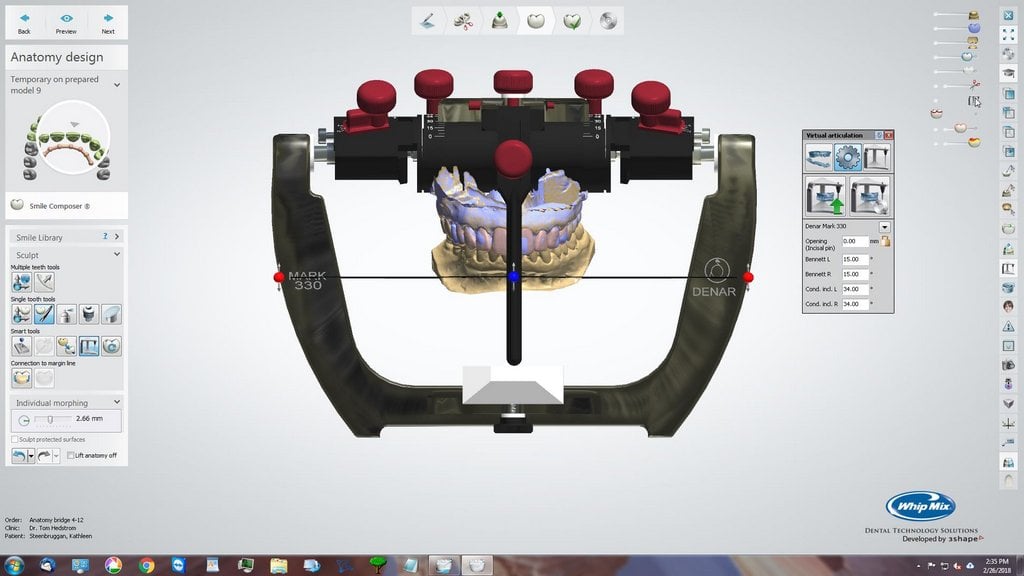 With more than 10 million Americans suffering from orofacial pain, alternative methods for completing dental procedures in order to accommodate sensitive patients are necessary.1,2 Orofacial pain, specifically jaw pain, can present in a variety of forms, including restricted mouth opening, pain while moving the jaw or mouth, and fatigue while the mouth is open. However, many patients suffering from these problems still require impressions for different dental procedures.
With more than 10 million Americans suffering from orofacial pain, alternative methods for completing dental procedures in order to accommodate sensitive patients are necessary.1,2 Orofacial pain, specifically jaw pain, can present in a variety of forms, including restricted mouth opening, pain while moving the jaw or mouth, and fatigue while the mouth is open. However, many patients suffering from these problems still require impressions for different dental procedures.
Ideal impressions capture the fine detail of the oral cavity, which include excellent margins and exact replicas of the soft and hard tissues, in order to serve as the foundation for future dental treatments. For patients suffering with jaw pain, the impression taking procedure can be an anxiously unclear and uncomfortable experience. However, with the following tips, dental professionals can relieve patient reservations while still obtaining accurate impressions.
Calming Patient Anxiety
Initial identification of patient fears, concerns, and pain level prior to taking the impressions conveys trust, sensitivity, and understanding. Explaining the impression taking procedure to patients, including estimated time for placement and setting, can reassure patients and help them feel safe and in control. Additionally, answering any questions a patient may have and encouraging them to share any anxiety they may feel also helps to reinforce their trust and confidence.
Ideal Material Selection
An ideal impression material for patients with jaw pain works quickly and minimizes discomfort, reducing the possibility for a gag reflex and increased jaw pain. Fast set impression materials help to minimize the amount of time that a patient’s mouth is open and therefore, reduce discomfort. Tasteless and odorless impression materials reduce the chances of gag reflex problems that may exacerbate jaw pain the patient is already experiencing. Additionally, a thixotropic consistency also limits gag reflex potential by ensuring that the impression materials will not slump or run.
Modifying Impression Technique
Many dental professionals routinely use the same technique for taking impressions, regardless of the patient. While this practice can be effective and efficient for most patients, those with jaw pain may require the use of a modified technique to minimize pain and still achieve a detailed impression. Smaller plastic impression trays provide greater flexibility and a potentially better fit than the typical metal trays. Some patients may even require and benefit from pediatric trays, providing the trays can capture complete margins and anatomic details.
Other modified trays and techniques may also be necessary to minimize patient discomfort while achieving accurate impressions. An open mind and a problem-solving attitude with a thorough understanding of impression techniques and materials increases the likelihood for taking accurate impressions of a patient with jaw pain.
While many patients may demonstrate anxiety during impressions taking procedures, patients with jaw pain typically exhibit increased discomfort when impressions are made. However, you can ease a patient’s mind, reduce discomfort, and obtain the precise impressions you need. By completing all of the prep work thoroughly, explaining the process to the patient, and working efficiently and quickly, accurate impressions can be achieved with reduced pain and discomfort.
- Lipton JA, Ship JA, Larach-Robinson D. Estimated prevalence and distribution of reported orofacial pain in the United States. J Am Dent Asoc. 1993;124(10):115-21.
- Von Kroff M, Dworkin SF, Le Resche L, et al. An epidemiologic comparison of pain complaints. Pain. 1998;32(2):173-83.













Leave a comment